Selective Phosphodiesterase 4B Inhibitors: A Review
- PMID: 25853062
- PMCID: PMC4318138
- DOI: 10.3797/scipharm.1404-08
Selective Phosphodiesterase 4B Inhibitors: A Review
Abstract
Phosphodiesterase 4B (PDE4B) is a member of the phosphodiesterase family of proteins that plays a critical role in regulating intracellular levels of cyclic adenosine monophosphate (cAMP) by controlling its rate of degradation. It has been demonstrated that this isoform is involved in the orchestra of events which includes inflammation, schizophrenia, cancers, chronic obstructive pulmonary disease, contractility of the myocardium, and psoriatic arthritis. Phosphodiesterase 4B has constituted an interesting target for drug development. In recent years, a number of PDE4B inhibitors have been developed for their use as therapeutic agents. In this review, an up-to-date status of the inhibitors investigated for the inhibition of PDE4B has been given so that this rich source of structural information of presently known PDE4B inhibitors could be helpful in generating a selective and potent inhibitor of PDE4B.
Keywords: Antiproliferative activity; Chronic obstructive pulmonary disease; Cyclic adenosine monophosphate; PDE4B; Phosphodiesterases (PDE) enzymes; Selective PDE inhibitors.
Figures











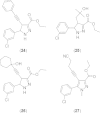


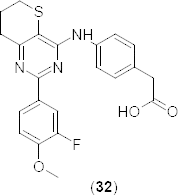

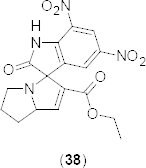


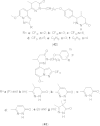

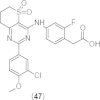



Similar articles
-
Phosphodiesterase 4B (PDE4B) inhibitors and their applications in recent years (2014 to early 2025).Mol Divers. 2025 Jun 14. doi: 10.1007/s11030-025-11242-2. Online ahead of print. Mol Divers. 2025. PMID: 40515964 Review.
-
Recent advances of Phosphodiesterase 4B in cancer.Expert Opin Ther Targets. 2023 Feb;27(2):121-132. doi: 10.1080/14728222.2023.2183496. Epub 2023 Feb 28. Expert Opin Ther Targets. 2023. PMID: 36803246 Review.
-
Discover natural compounds as potential phosphodiesterase-4B inhibitors via computational approaches.J Biomol Struct Dyn. 2016 May;34(5):1101-12. doi: 10.1080/07391102.2015.1070749. Epub 2016 Jan 20. J Biomol Struct Dyn. 2016. PMID: 26159554
-
A short review on structure and role of cyclic-3',5'-adenosine monophosphate-specific phosphodiesterase 4 as a treatment tool.J Res Pharm Pract. 2015 Oct-Dec;4(4):175-81. doi: 10.4103/2279-042X.167043. J Res Pharm Pract. 2015. PMID: 26645022 Free PMC article. Review.
-
Investigating the role of N-terminal domain in phosphodiesterase 4B-inhibition by molecular dynamics simulation.J Biomol Struct Dyn. 2021 Aug;39(12):4270-4278. doi: 10.1080/07391102.2020.1780154. Epub 2020 Jun 19. J Biomol Struct Dyn. 2021. PMID: 32552529
Cited by
-
PDE4 Phosphodiesterases in Cardiovascular Diseases: Key Pathophysiological Players and Potential Therapeutic Targets.Int J Mol Sci. 2023 Nov 30;24(23):17017. doi: 10.3390/ijms242317017. Int J Mol Sci. 2023. PMID: 38069339 Free PMC article. Review.
-
Adjunctive Phosphodiesterase-4 Inhibitor Therapy Improves Antibiotic Response to Pulmonary Tuberculosis in a Rabbit Model.EBioMedicine. 2016 Jan 14;4:104-14. doi: 10.1016/j.ebiom.2016.01.015. eCollection 2016 Feb. EBioMedicine. 2016. PMID: 26981575 Free PMC article.
-
Novel pharmacological approaches in abdominal aortic aneurysm.Clin Sci (Lond). 2023 Aug 14;137(15):1167-1194. doi: 10.1042/CS20220795. Clin Sci (Lond). 2023. PMID: 37559446 Free PMC article. Review.
-
The regulatory role of PDE4B in the progression of inflammatory function study.Front Pharmacol. 2022 Oct 6;13:982130. doi: 10.3389/fphar.2022.982130. eCollection 2022. Front Pharmacol. 2022. PMID: 36278172 Free PMC article. Review.
-
Identification of a Selective PDE4B Inhibitor From Bryophyllum pinnatum by Target Fishing Study and In Vitro Evaluation of Quercetin 3-O-α-L-Arabinopyranosyl-(1→2)-O-α-L-Rhamnopyranoside.Front Pharmacol. 2020 Jan 22;10:1582. doi: 10.3389/fphar.2019.01582. eCollection 2019. Front Pharmacol. 2020. PMID: 32038254 Free PMC article.
References
-
- O’Donnell JM, Zhang HT. Antidepressant effects of inhibitors of cAMP phosphodiesterase (PDE4). Trends Pharmacol Sci. 2004;25:158–163. http://dx.doi.org/10.1016/j.tips.2004.01.003 - DOI - PubMed
-
- Kanes SJ, Tokarczyk J, Siegel SJ, Bilker W, Abel T, Kelly MP. Rolipram: a specific phosphodiesterase 4 inhibitor with potential antipsychotic activity. Neuroscience. 2007;144:239–246. http://dx.doi.org/10.1016/j.neuroscience.2006.09.026 - DOI - PMC - PubMed
-
- Baumer W, Hoppmann J, Rundfeldt C, Kietzmann M. Highly selective phosphodiesterase 4 inhibitors for the treatment of allergic skin diseases and psoriasis. Inflamm Allergy Drug Targets. 2007;6:17-26. http://dx.doi.org/10.2174/187152807780077318 - DOI - PubMed
-
- Souness JE, Aldous D, Sargent C. Immunosuppressive and anti-inflammatory effects of cyclic AMP phosphodiesterase (PDE) type 4 inhibitors. Immunopharmacology. 2000;47:127–162. http://dx.doi.org/10.1016/S0162-3109(00)00185-5 - DOI - PubMed
-
- Conti M, Richter W, Mehats C, Livera G, Park JY, Jin C. Cyclic AMP-specific PDE4 phosphodiesterases as critical components of cyclic AMP signaling. J Biol Chem. 2003;278:5493–5496. http://dx.doi.org/10.1074/jbc.R200029200 - DOI - PubMed
Publication types
LinkOut - more resources
Full Text Sources
Other Literature Sources
